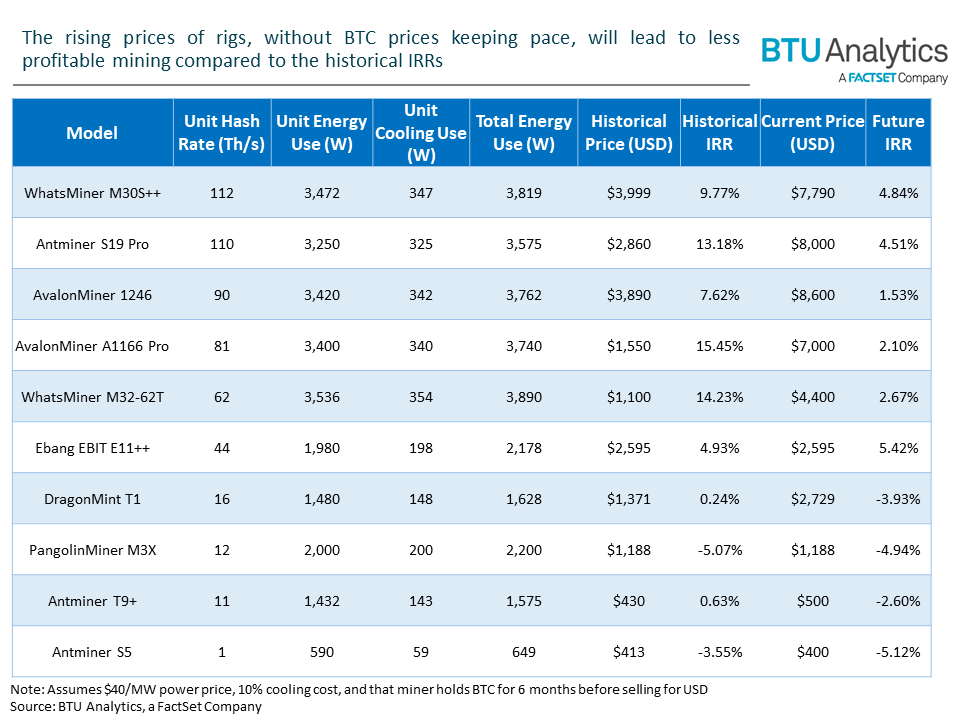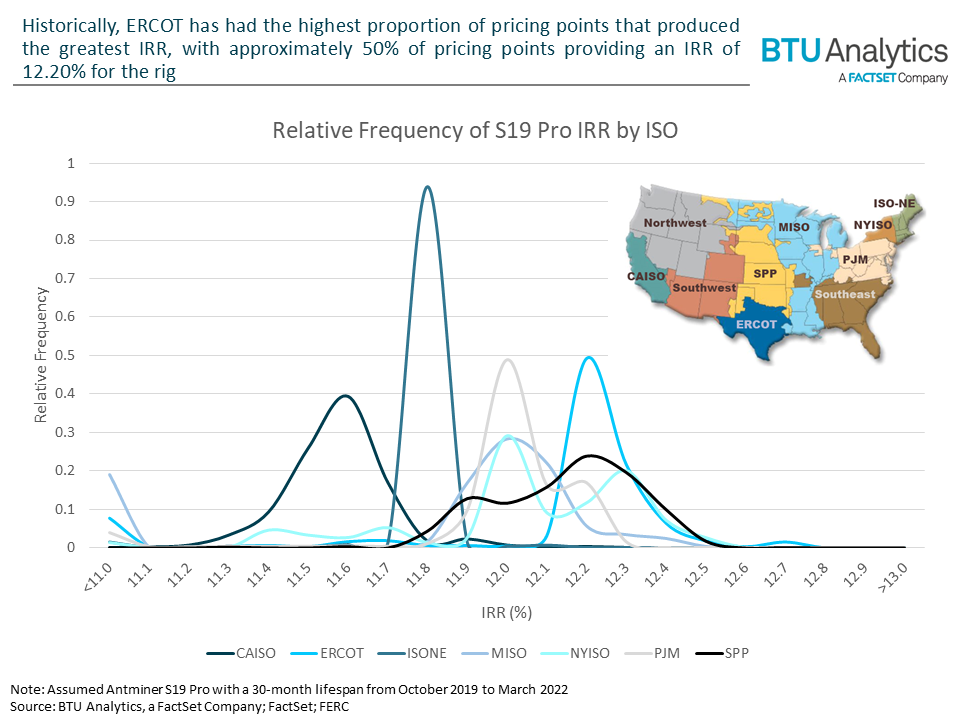As the cryptocurrency industry continues to mature, mining hardware options have expanded and the operators of datacenters have become more strategic in siting to help control costs. Wholesale power markets replete with congestion, negative pricing events, and renewables curtailments provide an opportunity for miners to minimize their operating costs, while also opening up additional streams of revenue through ancillary service products. Today’s energy market insight will dive into the impact of power pricing on the profitability of Bitcoin (BTC) mining rigs and what sites across the US are most beneficial for minimizing power costs.
In brief, to mine a Bitcoin, you must solve for the correct hash, which is the solution to a mathematical computation. When accomplished, the miner is awarded with 6.25 BTC; however that reward declines through time. Thus, when comparing mining hardware, the primary difference for hardware is based on how many hashes can be guessed within a second. This is typically represented in terahashes per second (Th/s), where a higher number represents a more powerful rig. However, the more powerful rigs typically require more energy, raising the energy costs for a mining operation.
The table below illustrates estimated historical internal rate of returns (IRRs) for some of the most popular mining rigs on the market. The historical IRR uses the release prices of the rigs and historical BTC pricing, while the future IRR uses the current price of rigs and a projection of increasing BTC prices.

Regardless of looking at either historical or future returns, less powerful rigs, with a Th/s rate less than 20, are not effective enough at mining BTC to be worth their cost, as seen by the low and negative IRRs. The more powerful rigs provided better estimated returns historically, but when looking at future IRRs, most rigs have lower returns. This is primarily due to the increased price of the rigs. For example, the Antminer S19 Pro has its price increase from $2,860 to at least $8,000. When using the historical price of the rig, the future IRR increases from 4.8% to 18.5%.
Since the cost of power can vary across the country, the above calculations hold power prices flat at $40/MW. However, varying power prices can provide both obstacles and opportunities to mining economics. Below is an illustrative analysis of the impact of wholesale power pricing (from October 2019 to March 2022) on the profitability of an Antminer S19 Pro at different power pricing points across each ISO.

Approximately 50% of pricing points in ERCOT provided a historical IRR of between 12.2% and 12.3%. This implies that there are more favorable pricing points when mining for BTC than any other ISO. Considering that the state of Texas has 35.9 GW of operational wind capacity, the most of any US state, and 9.1 GW of solar capacity, the second most of any US state trailing California, it follows that ERCOT would have more locations with cheaper power. However, with approximately 8% of pricing points providing an IRR of less than 11%, choosing a specific location in ERCOT will also make a difference in the potential profitability for a BTC operation.

By placing operations in West Texas, BTC rigs have the best potential to capitalize on cheaper power and maximize their IRR, reaching a historical max of 14.4%. However, in future IRR calculations, this only reaches a maximum of 5.76%. This makes finding additional revenue streams for BTC operations important. In ERCOT, this could be done by bidding into the ancillary services market. When load increases in ERCOT, miners can get paid by ERCOT to curtail their consumption, which helps maintain grid reliability. How will the continued addition of cryptocurrency miners impact the load of ERCOT and other ISOS? We will explore this topic in a future energy insight.









